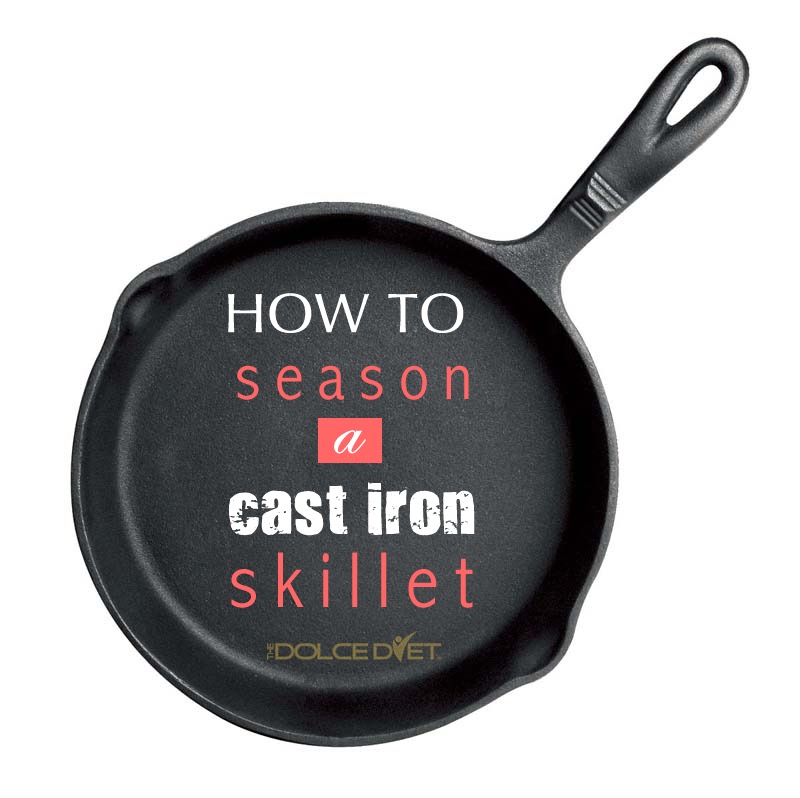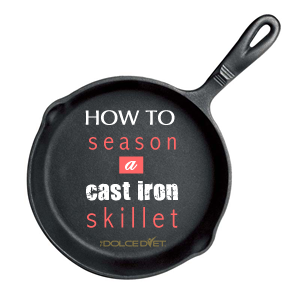 by Todd Harwood
by Todd Harwood
Twiiter: @Todd_Harwood
One of my fondest memories as a youngster was of going to summer cowboy camp. They would take us out and we would sleep under the stars and wake to the blessed smell and sound of bacon sizzling in an iron skillet over an open fire. We’d sit and eat breakfast by the fire next to a covered wagon. Ahh, nothing quite like it.
In a recent Mike Dolce Show Podcast (listen here) I heard Brandy and Mike mention that they had abandoned the use of their iron skillet. They mentioned that they could not keep up with the maintenance and it sat and got rusty.
I beseech thee! Get that skillet out and get back in the game! In my not-so-humble opinion, iron skillets are the most under used and underestimated cooking tool out there. I understand that they are not the choice to cook everything, but the applications are endless. Searing, slow cooking to baking. They do so much.
Do you consider yourself “Green”? Do you want to add as little to the public dumpsite as possible in your lifetime? Well grab some Iron skillets or pans. Iron skillets were fabricated in a time when things were made to last 100 years or more, if properly maintained. They will literally last generations.
How many sets of non-stick garbage have you gone through? I myself have gone through as many as three sets. Not good.
Here are a few examples of why I think that iron skillets are a great cooking tool;
- They are practically indestructible.
- They hold heat and *heat evenly, thus cooking your food evenly.
- They add flavor to the food that is cooked in them.
- They are much easier to clean than most cooking products.
- They are heavy enough to be an effective striking weapon. (ignore this)
OLD IRON SKILLET-NEW LIFE
Let’s say you have an old skillet lurking about. Has a bit of rust on it. Not a problem.
If it is rusted so bad that it has created pits in the metal, buy a new one.
If it just has surface rust, you can get it wet, put 2 tablespoons of salt in it and rub it with a potato cut in half. If that does not work use a brillo pad. This is called “stripping” you will strip all prior “seasoning” off as well as the incidental rust that has formed. When the rust is gone dry it off. Rub 2 tablespoons of grapeseed oil into the inside of the pan. Put it face down in an oven (middle rack) that is preheated to 350. Use a baking sheet on the bottom rack to catch dripping oil. Cook that sucker for 30-45 mins. It will be hot so use oven mitts to take out from oven. Let sit and cool then wipe excess oil from pan, leaving it slightly shiny with oil. You now have un-retired your iron skillet and can cook with it. This technique is used on a new one minus the Brillo pad or potato salt job.
NEW IRON SKILLET-SEASON THAT BEAST
You went to Amazon.com and bought a brand spanking new Lodge Logic Seasoned Cast Iron Product and want to hear it sizzle. Wash it with hot water and dish soap, then follow the “seasoning” instructions in the prior paragraph. You have a new seasoned iron skillet! Cook something. I am a big fan of the brand Lodge Logic. Made in the USA.
Now you have cooked something and there is food residue in the pan. Don’t put it in the dishwasher, don’t scrub the hell out of it. “Chill Winston, chill”. Wait for it to cool. Use a plastic pan scrapper to get the chunks out. You can put a bit of hot water in it to loosen things up. The key is, seasoning comes from years of build up. This is what gives food flavor and what preserves the pan.
So you have cooked and then lightly cleaned the pan, now drip about a ½ teaspoon of grapeseed oil in it and wipe it with a paper towel evenly coating the pan. DONE. Put it in the cupboard until next time.
Important Health Info: Chunks of actual food is what you want to get rid of, not the pan build up. Chunks of left over food will grow bacteria, the seasoning will not.
Ever go to a Chinese restaurant and see them using woks over high flame? They almost don’t look like a Wok due to so much seasoning that has built up on them. That is why that stir fry is so damn tasty.
Living Lean Nation – Loves Eggs
This is the kicker. Many people think that the iron skillet is only for high heat cooking. (BUZZZZ) wrong. I get the most PERFECT fried egg in my iron skillet. I have a small 6.5 inch egg skillet.
Add your choice of oil, heat it on the smallest burner’s lowest setting. When you can’t touch the handle it is ready to cook. Another trick is to flick a drop of water into the oil in the pan and it jumps, it’s time to cook. Drop your egg in. Let the white turn from translucent to opaque white. Do not let the yolk start to harden. Put a teaspoon full of water in the pan with the egg and put a pot top of equal size on top to trap the steam. When all of the white of the egg has gotten solid enough to flip, turn burner off then flip it. Just enough time to color the non-fried side. Then remove from the pan. The less time, the more runny the yolk, more time you leave it, the more solid the yolk.
The way the iron skillet holds heat evenly (unlike thinner inferior metal pans) it cooks the egg from end to end, top to bottom evenly. This is the secret to a great egg. Also when you cook eggs on a very low setting you preserve the nutrients. Very important
Where’s the Beef? In my Belly!
I also cook my grass-fed beef in an iron skillet and transfer it to the oven. This is a very effective method that preserves the nutrients and tenderness of meat, and it adds tremendous flavor.
Sear each side at a high heat for about two minutes then put the steak into an oven that is on 250 and bake for 20-30 minutes depending on what color you like your meat. Rare, Medium Rare, Medium, Well.
I hope this helps and encourages you to get out that iron and give it another go, or buy one and start experimenting. You will get hooked.
Remember don’t make this more labor intensive than it needs to be.
Chunks gone. Coat with oil. Finished.
Happy Cooking and thanks for reading.
About the Author

Todd Harwood is a member of MYDolceDiet.com. He frequently blogs about his journey to health & wellness. We appreciate his wit, honesty and passion for helping and inspiring others on their own paths to self-discovery.





